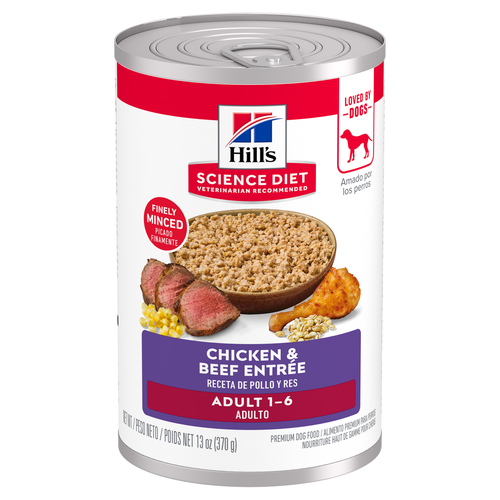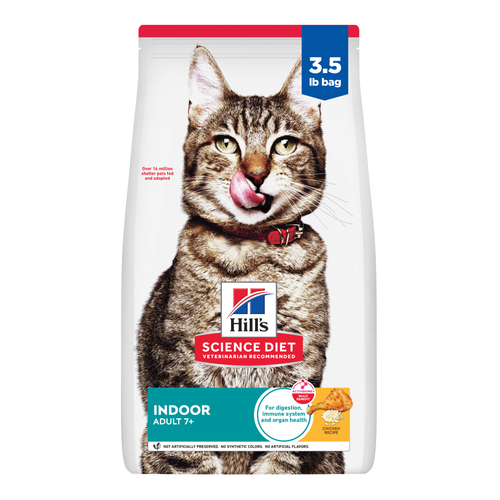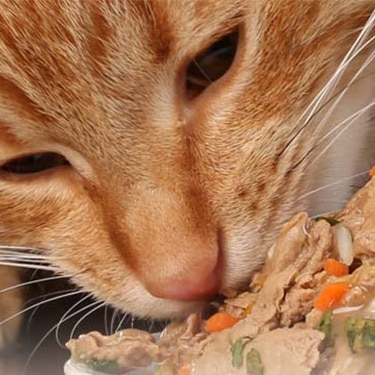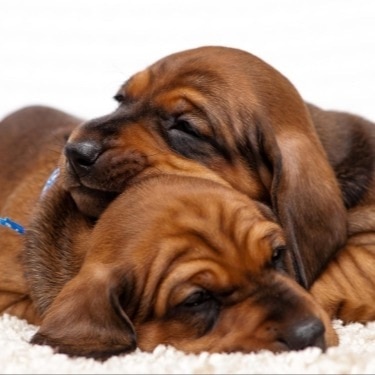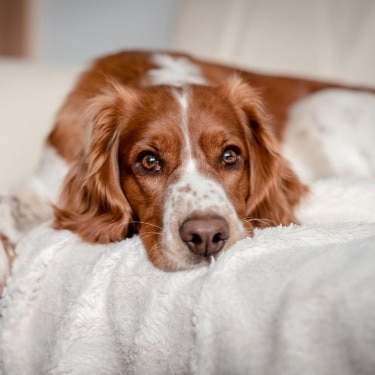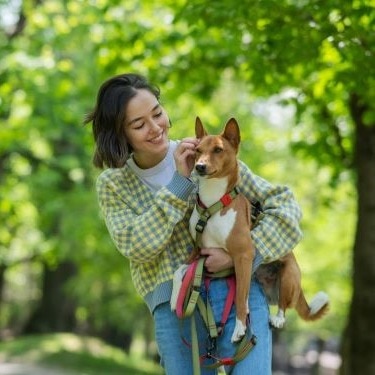

A visiting child walks past your dog's food bowl, or you try to take an unapproved holiday treat away from your dog before it becomes a choking hazard. In response, your dog snarls, snaps and lunges. Food aggression in dogs is one of the most common forms of resource guarding, and it poses risks to people and other pets. Unresolved behavioral issues can also cause stress and potentially damage your bond.
How you handle these situations can improve the behavior or make it worse. It's important to understand how to work with your pup to overcome this behavior and when to seek professional help.
What Is Food Aggression in Dogs?
Food aggression, also called possessive aggression, is a protective behavior that occurs in response to food. You're most likely to see it during meals, but some dogs may also guard their empty bowl, treats and edible chew toys or become possessive over other items as well. In some cases, dogs are only protective around strangers (including visitors in your home), but others may be aggressive toward everyone — including other pets.
It doesn't matter that you religiously fill your dog's food bowl every day. It's instinctual for them to protect important resources, and they may express that instinct in different ways. They may simply gulp faster to "protect" their meal from being stolen, or they may warn a perceived intruder to stay away by baring their teeth, growling and snarling — or even snapping and biting. In cases where your dog decides to bite or fight to keep control, this natural instinct can quickly become dangerous.
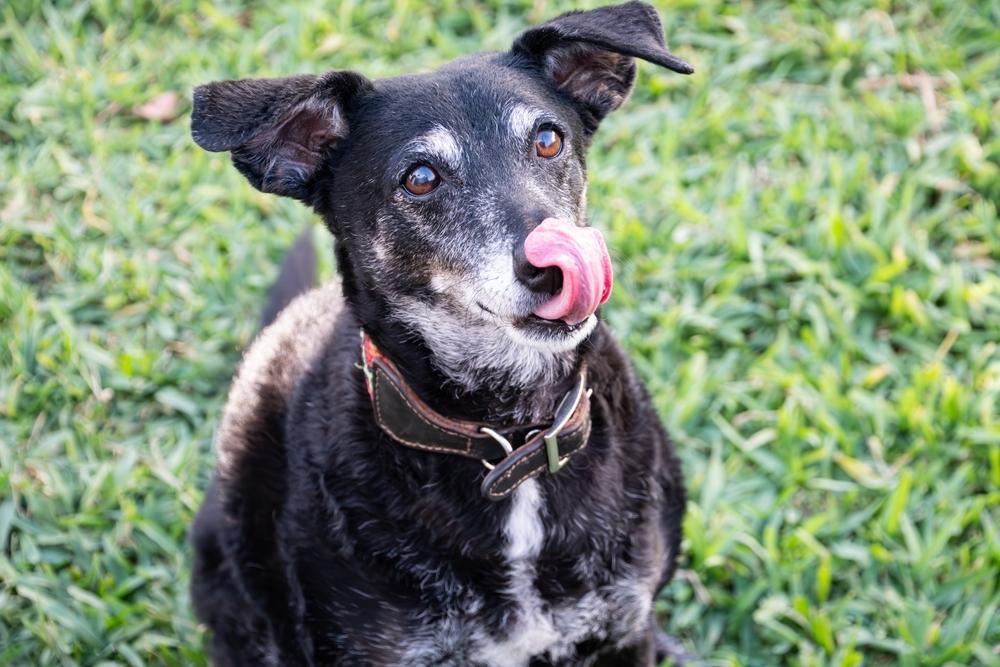
What Causes Resource Guarding Behavior?
Resource guarding and food aggression have nothing to do with a dog acting "mean." Aggression in dogs typically arises from insecurity and can develop early in life or in adulthood due to a range of factors.
Genetic factors: Dog breeds with a guarding heritage, such as German shepherds and Dobermans, may be more prone to developing food aggression. Mixed breed dogs may also inherit the tendency.
Temperament: Dogs who are already shy or fearful may feel threatened more easily, making them more likely to want to protect their resources. Stressful situations like visitors or a new pet in the home can increase this tendency.
Pain or underlying medical factors: Even easygoing dogs may act out when they're experiencing pain or discomfort.
Past food scarcity: Some puppies and adult dogs who were forced to compete for meals may develop protective behavior around food.
Lack of proper training: Besides specific object release training — such as "drop it" or "swap it" for forbidden food items — proper basic training boosts confidence to help counteract stress and fearful behaviors.
What Are the Signs of Food Aggression in Dogs?
Not all signs of aggression are obvious. Watch for these milder, less intense displays as warning signs that your dog is feeling threatened around their food bowl:
Freezing, usually for a short duration
Crouching over or otherwise using their body to block their food
Gulping food
Watching the person/pet as they approach
Baring their teeth
Pinning their ears back
Holding a hard stare
Grabbing an item (e.g., bone or treat) and taking it elsewhere
In more severe cases, you might see growling, lunging, snapping or biting. Some dogs may even chase people or other pets who come too close to their guarded food or object. Any of these behaviors could escalate quickly, so take them as warning signs to enlist help from a veterinary behaviorist.
How to Deal With Food Aggression in Dogs
If your dog is showing food aggression, it means they already feel defensive. Never punish your dog — punishment makes the behavior worse.
In mild cases, simply feeding your dog in a private room can eliminate stress and resolve the behavior. In more extreme situations, systemic desensitization can reduce stress and teach dogs they don't need to guard. If you have more than one food-possessive dog, train each one separately.
Severe cases of food aggression require professional assistance. If untraining this behavior proves challenging, or if you feel uncomfortable attempting it yourself, consult your vet and/or seek support from a board-certified veterinary behaviorist.
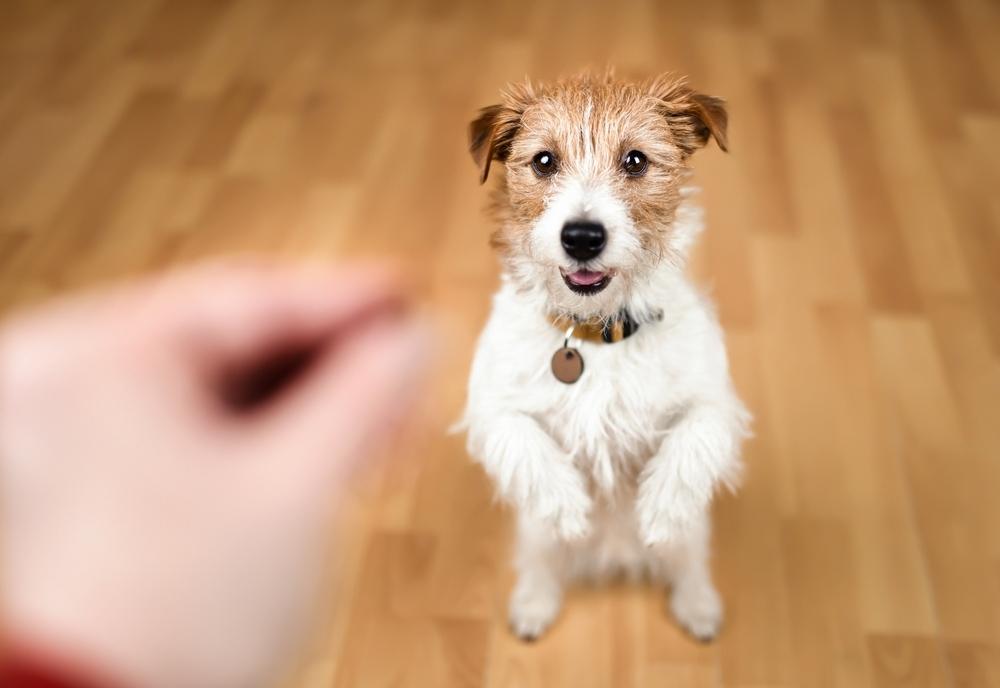
1. Create a New Routine
Start by getting rid of any items your dog is protective of, whether it's a food bowl, toy or chew, and replacing it with a new one. You'll then want to choose a new location for meals (ideally a separate room) and keep others away during mealtime. If you have other food-guarding dogs, use a baby gate to keep them out of the room but let them watch to reinforce the lessons.
2. Position Your Dog's Bowl
Put your dog on a leash and attach it to a stable stationary object so they can only move the length of the tether. This teaches your dog that you control food access. Place the new bowl within leash-reach of your dog.
3. Make a Control Bowl
Measure a meal-size portion of food into a separate "control bowl." This bowl is for you to hold — don't allow your dog access.
4. Slowly Dispense Food Into Their Bowl
Ask for a sit. Once they're seated, reward them by tossing four or five kibbles from the control bowl into their food bowl (or use a long-handled spoon). Continue dispensing their meal three or four kibbles at a time, alternating "sit" with "down" until they've finished. This teaches your dog they must earn food by "paying" with a sit or lie. Repeat this process for 10 days.
5. Demonstrate the Connection Between Behavior and Food
As long as your dog remains calm, gradually increase the amount of food you add to their bowl each time.
If your dog growls, lunges or snaps, turn and walk away with the control bowl of food. Wait five to 10 minutes, and then try again. A repeat of aggression means no meal until the next scheduled feeding. Missing one meal won't hurt otherwise healthy dogs, and it demonstrates the consequences of being aggressive. Only polite behavior earns a meal.
6. Reinforce the Lesson
When your dog eats a meal without any signs of aggression, toss in a special dog treat. This approach shows them that, in response to polite behavior, food doesn't go away — bonus treats get added. However, be mindful that you aren't feeding your pup more than 10% of their daily caloric allowance in treats. Once your dog consistently shows good behavior, ask another adult family member to take a turn feeding them. This helps your dog generalize that humans near their bowl means good things.
Helping Your Dog Thrive
With any type of aggression, prevention remains the safest and most effective response. Meal feed pets separately. Pick up and manage items like toys or favorite chews that cause arguments between pets, and only offer them in separate rooms. Give your dog every opportunity to behave politely, and reward good behaviors. If your dog shows food aggression repeatedly over time or if you have any concerns with their behavior, consult your vet and/or a board-certified veterinary behaviorist for support. With effort, patience and love, you can help your dog feel more secure and confident.

